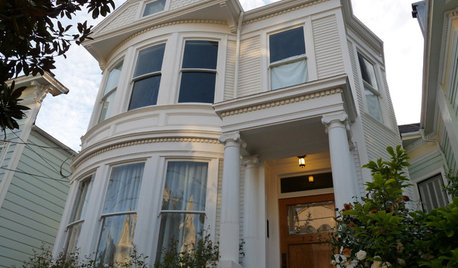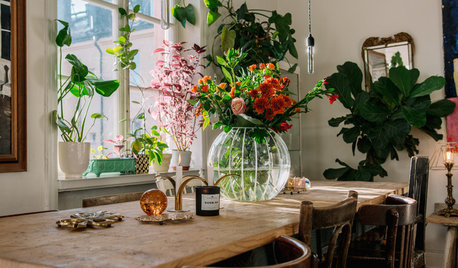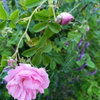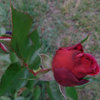I'm compiling a historical rose list to send to the B.B.C. in the hopes they will stop doing things like showing Queen Elizabeth the Great being given a very long stemmed yellow, high-centered H.T. as they did in 'The Virgin Queen' with all the other surroundings accurate to that period. The earliest date of an yellow rose, I could find, that has the fullness of petals to appear like a garden rose,to be introduced to England was probably grown in John Tradescents' garden in 1603, the year of Elizabeths death; R. hemispherica.
Because eglantine roses were shown in paintings with her as a symbol of virginity, those would have been appropriate to give her, or the white 'Rose of York' ( she was named after her paternal grandmother Elizabeth of York who belonged to the family that the rose was named for )and the red 'Rose of Lancaster, which comprise the Tudor rose symbol. Any of those could be given to her in late spring or early summer.
Graham Stuart Thomas wrote that he thought R. moschata was introduced to England in the Elizabethan era, but I don't know what facts he based his opinion on. If it is because Shakespeare reffered to a sweet Musk rose, which could imply fragrance, I would agree with him because to me R. arvensis (Englands' native musk rose) has little scent other than a little bit of vegetal like scent that reminds me of cornsilk, while R. moschata is not only sweetly scented, but the fragrance wafts quite a bit around, and away from the rosebushes.
Would I be correct in saying-
-all of the wild roses native to Europe are pink and/or white?
- each wild rose blooms for c. one month each year, most roses bloom in spring or early summer.
If anyone could tell me when the wild rose species in England bloom I would be greatly grateful.
The only red in a native European wild rose I could see was in R. alpina which is white edged with cerise edges. No yellow roses appeared until c. 1550's after what was afterwards called the 'Austrian Briar' was introuduced from the middle east to Europe.
R. hemisperica was so rare in the 1600's even in the large floral markets of Amsterdam that a painter commisioned to paint The Yellow Rose' as it was called then, could not find even one.
Thank you very much,
Luxrosa













michaelg
mariannese
Related Professionals
Roxbury Crossing Landscape Architects & Landscape Designers · Wake Forest Landscape Contractors · Columbine Landscape Contractors · Forest Hills Landscape Contractors · Framingham Landscape Contractors · Hurricane Landscape Contractors · New Providence Landscape Contractors · West Coon Rapids Landscape Contractors · Drexel Hill Swimming Pool Builders · Carmel Siding & Exteriors · Dumont Siding & Exteriors · Massapequa Siding & Exteriors · Plano Siding & Exteriors · West Haven Siding & Exteriors · Somersworth Siding & Exteriorsle_jardin_of_roses
organic_tosca
patriciae_gw
michaelg
luxrosaOriginal Author
jerijen
zeffyrose
michaelg
kaylah